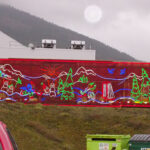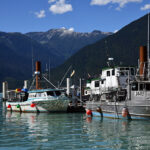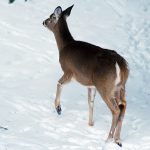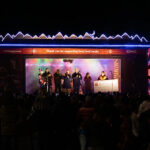Home »

Hunt Clean Go – protecting our wild spaces
 Submitted by East Kootenay Invasive Species Council
Submitted by East Kootenay Invasive Species Council
As the crisp autumn air signals the start of hunting season, it’s essential to remember that we all share a common responsibility to safeguard the natural beauty and biodiversity of our wild spaces. Hunters, who deeply value the plants and animals that make up our ecosystems, play a crucial role in this effort. This hunting season, let’s embrace the “Hunt Clean Go” initiative to ensure we protect our game and the habitats they rely on.
Understanding Invasive Species
Invasive species are non-native plants, animals, or pathogens that spread aggressively in new environments, often displacing native species and disrupting ecosystems. By September, many invasive plants have gone to seed, making them particularly easy to spot and manage.
Negative Impacts on Hunting and Recreation
The presence of invasive species can have significant repercussions for hunting and recreational activities:
- Habitat Degradation: Invasive plants can alter the structure of habitats, reducing the availability of food and shelter for wildlife. This impacts hunting success and overall enjoyment of outdoor activities
- Ecosystem Disruption: Invasive species can disrupt food chains and nutrient cycles, affecting the health and behavior of game species. This can lead to fewer opportunities for hunters and a decline in overall wildlife populations.
- Spread of Pests and Diseases: Some invasive species act as vectors for diseases that can affect both wildlife and humans. This can have far-reaching consequences for public health and safety.
- Economic Costs: Managing invasive species and restoring affected habitats can be costly, impacting local economies and conservation budgets.
Prevention Measures
To prevent the spread of invasive species and protect our wild spaces, follow these key practices:
Arrive Clean, Leave Clean: Before heading into the backcountry, ensure your gear, boots, and vehicles are free of seeds, mud, and plant material. After your adventure, inspect and clean your equipment to avoid transporting invasive species to new areas.
Stay on Designated Trails: By sticking to established paths, you minimize the risk of inadvertently spreading invasive species into pristine areas.
Report Sightings: If you encounter invasive species, report them! Early detection is crucial for effective management.
Educate and Advocate: Share information about invasive species with fellow hunters and outdoor enthusiasts. Awareness is a powerful tool in preventing the spread of these harmful invaders.
By adhering to these practices, hunters can contribute significantly to preserving the health and integrity of our natural landscapes. Let’s work together to ensure that our hunting seasons are not only successful but also environmentally responsible.
Embrace the “Hunt Clean Go” ethos this September, and help protect the wild spaces we cherish. Together, we can make a lasting impact on our environment and ensure that future generations enjoy the same natural beauty and abundant wildlife that we do today.
Boaters, anglers, and paddlers can learn about Clean Drain Dry. Hikers, bikers, hunters and lovers of the great outdoors can discover Play Clean Go! And everyone is encouraged to report invasive species.
The East Kootenay Invasive Species Council (EKISC) is a non-profit organization dedicated to fostering partnerships and advancing collaborative projects in natural and applied science, policy research, outreach, and education. Our mission is to safeguard forests, fields, gardens, waterways, and urban areas from the harmful impacts of invasive species.
EKISC operates through two key programs: our Field team, which conducts on-the-ground invasive species monitoring, treatment, and inventory efforts, and our Education team, which provides outreach, training, and resources to the community.
To learn more about our work and access a comprehensive range of invasive species resources, visit us at www.ekisc.com.
Images submitted












